Selling your jewellery at auction: an easy step by step guide
From Cartier and Van Cleef & Arpels and high-end academic collections to the smallest of sentimental treasures, Dreweatts Deputy Chairman James Nicholson is here to demystify and make transparent every step of the selling process, so you can achieve the best outcome and experience when selling your jewellery at auction.
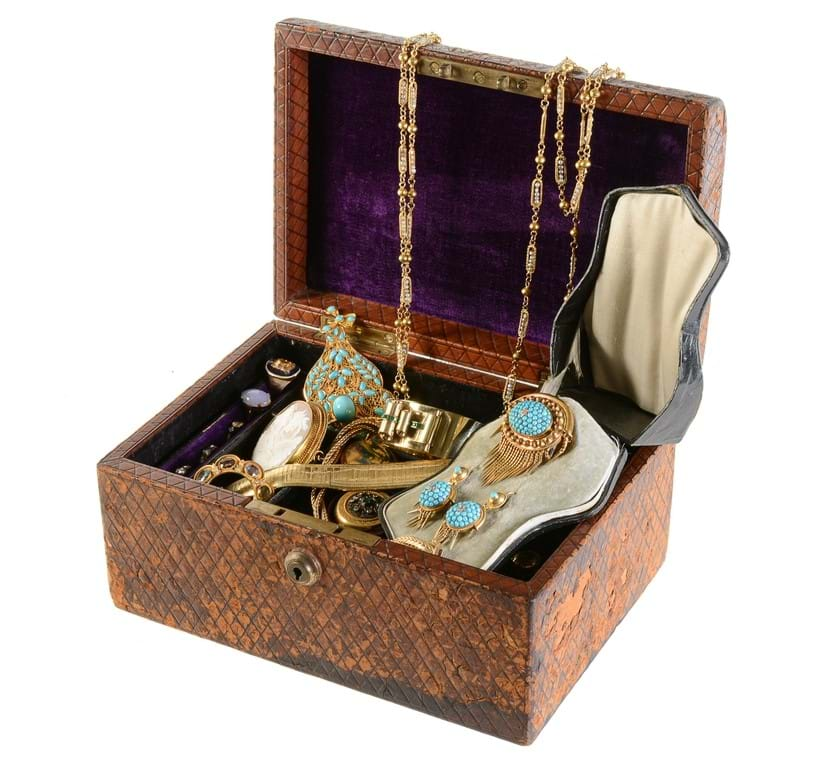
Discover your jewellery’s current market value
You may have done some research online to try and find out what your items might be worth, only to be confronted with confusing false leads, which may not be a true reflection of what your jewellery will really sell for.
The listings you find on some on-line market platforms can often be very unrealistic. The current open market value of your jewellery may differ considerably from any previous valuations you may have had, especially in comparison to any insurance valuations at retail replacement level.
The first step in deciding whether to sell your jewellery is to ascertain what its real current market value is, and to get an opinion from an experienced, fully qualified and trusted jewellery valuer
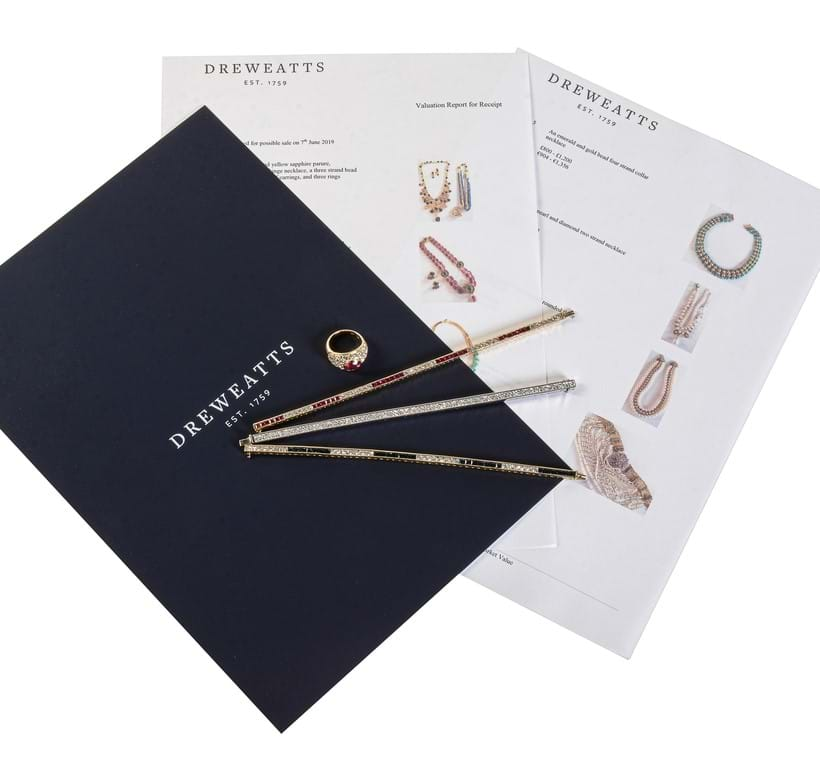
Find a jewellery specialist - trust and sensitivity are key
To navigate through your options, you need impartial advice from a fully qualified and experienced jewellery valuer, as well as someone who is sympathetic to the very personal nature of selling sentimental jewellery.
A quick internet search of how to sell jewellery brings up a myriad of options, but in an unregulated field, how can you be sure you are going to raise the maximum potential value from your pieces?
The preferred way is to employ the help of a reputable auction house. Jewellery specialists at the larger auction houses will hold gemmological and diamond grading qualifications from a recognised body such as the Gemmological Association of Great Britain, The Gemological Institute of America or the National Association of Goldsmiths.
The auction houses themselves will be members of industry bodies such as the Society of Fine Art Auctioneers (SOFAA), which ensures that the highest ethical and professional standards are adhered to by the auction house and its specialists.
Send photographs and paperwork
A great initial step to getting your pieces valued would be to send images of them to your chosen valuer. If you’re unsure how to do this ask a friend or relative for help using your phone camera. The images need to be high resolution and close up, using the macro lens setting on your phone camera.
Not only do the valuers need to see the front of the piece, they also need to see the back, to determine the age of the piece and whether it may have any wear, damage or previous repairs.
You should also send any previous valuations, and any gemmological or diamond certificates from a recognised Gemmological Laboratory.
Such information will give the valuer the details about stone weights and additional important information about the piece. Any provenance should be provided as this can add a premium to the piece.
Whilst the valuer won’t be able to give a very accurate market value from images, they will be a great start, and we will be able to give a rough guide as to the age and condition of the piece, and its desirability in the current market.
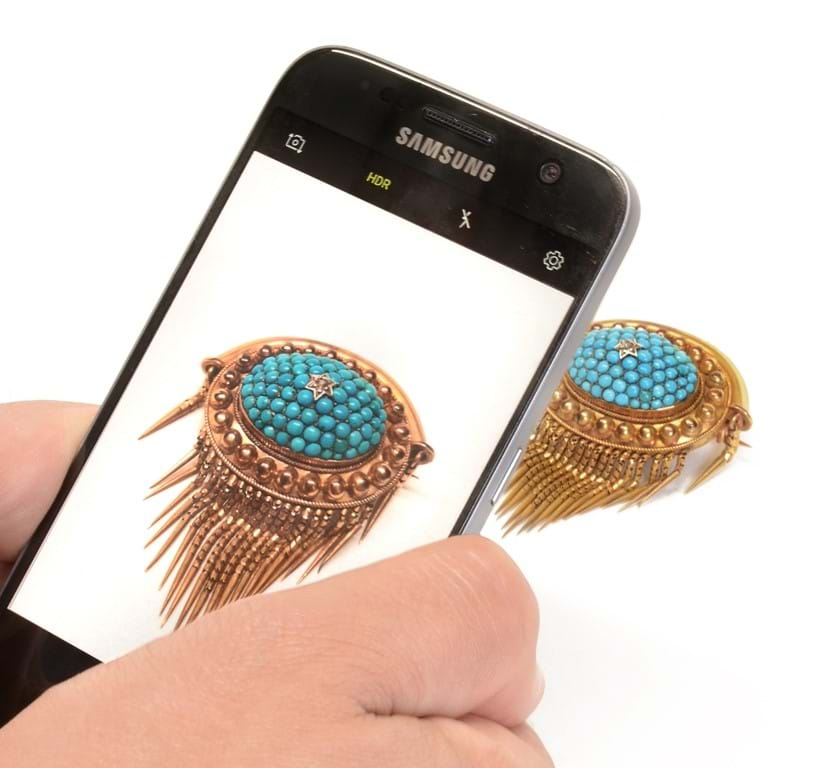
Meet the specialist in person
Accurate market values can only be given once the piece has been inspected first-hand.
At Dreweatts we have three fully qualified gemologists and diamond graders who handle thousands of pieces of jewellery each year. When we examine your jewellery, we are assessing the piece for its intrinsic value (the carat of the gold, the quality of any diamonds in relation to the 4Cs etc) as well as an expert examination and assessment of all the other gemstones in the piece. We also take into account the age, condition and current market appeal of your piece.
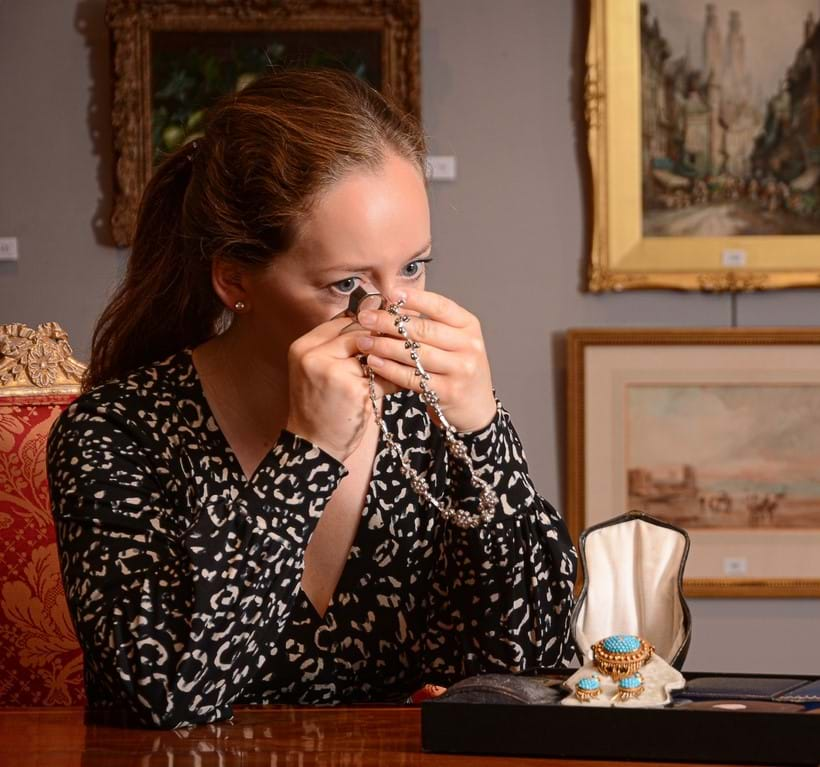
Our specialists are available in person at both Donnington Priory and in our Pall Mall offices in London, as well as monthly valuation events in Italy and Spain. We are available to come to your home, bank or office to give first-hand advice on selling your jewellery. All the valuations we carry out for open market and for selling your jewellery at auction are free, and come without any obligation to sell with Dreweatts.

The pre-sale auction estimate
The pre-sale auction estimate is printed in the sale catalogue and on all online listings as a guide price for the buyer. In our experience and opinion, based on the research into your pieces, this is the price range that your piece will probably sell for when offered for sale at auction. However, in some circumstances, the eventual selling price for rare, high demand or currently highly fashionable jewels can exceed the pre-sale estimate.
In coming up with a market value the valuer will measure the carat weight (size) of all the stones in a piece; inspect the piece for hallmarks, makers’ marks, maker’s signatures and other assay marks to identify who made the piece and where it came from.
Our specialists consult a number of resources – including current diamond prices from the New York Diamond Bourse, and auction records for similar pieces. We can then give an accurate pre-sale auction estimate for your items, which will be a reflection on what similar pieces have sold for recently at auction.
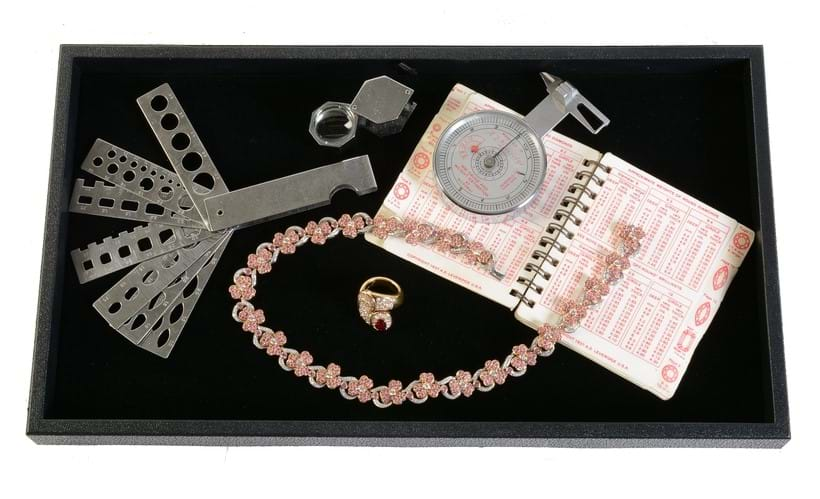
Consigning to the right auction
Once you have been given the pre-sale estimate and have decided to consign your jewellery, your pieces will be offered for sale at a specialist jewellery sale.
Dreweatts hold 11 dedicated specialist jewellery sales each year. We place a reserve on your pieces, which is the price below which your jewellery will not be sold and is your protection that your items can only be sold at a fair open market price. If bidding on your piece does not reach the reserve, your item will not be sold. The reserve would never be placed higher than the lower end of the pre-sale estimate.
- January: Mid-season jewellery auction
- January: Timed online jewellery auction
- March: Fine jewellery auction
- May: Mid-season jewellery auction
- May: Timed online jewellery auction
- July: Fine jewellery auction
- August: Mid-season jewellery auction
- August: Timed online jewellery auction
- October: Mid-season jewellery auction
- October: Timed online jewellery auction
- November: Fine jewellery auction
Jewellery provenance and history - the deeper research
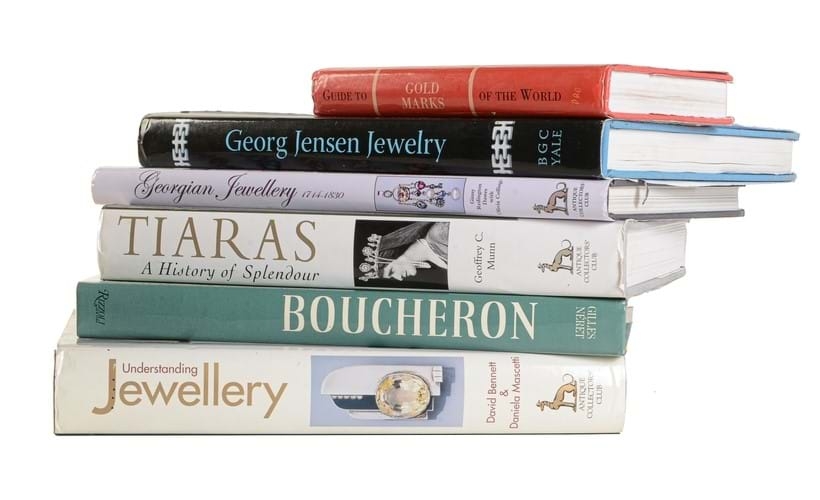
After consignment, your pieces should then be prepared for sale. This involves re- inspection of the pieces to create full catalogue descriptions that will be used in printed catalogues and on-line listings.
At this stage, further research into the pieces takes place and interesting provenance will be fully explored and documented.
In some circumstances, important diamonds and coloured stones are sent to internationally recognised Gemmological Laboratories in the UK, the USA and Switzerland to obtain gemmological certificates relating to diamond grading, or country of origin for some coloured gemstones. All natural pearls are sent for laboratory testing and certificates are obtained in all cases.

Cleaning and repairing jewellery – getting auction ready
To achieve the best price, your chosen auctioneers should clean the jewellery and carry out any minor repairs if necessary. The pieces will then be professionally photographed for the sale catalogue, and additional images taken of the back of the pieces, as well as any hallmarks, makers’ marks and signatures.
Courting the right bidders - in person, in print, via social media and online
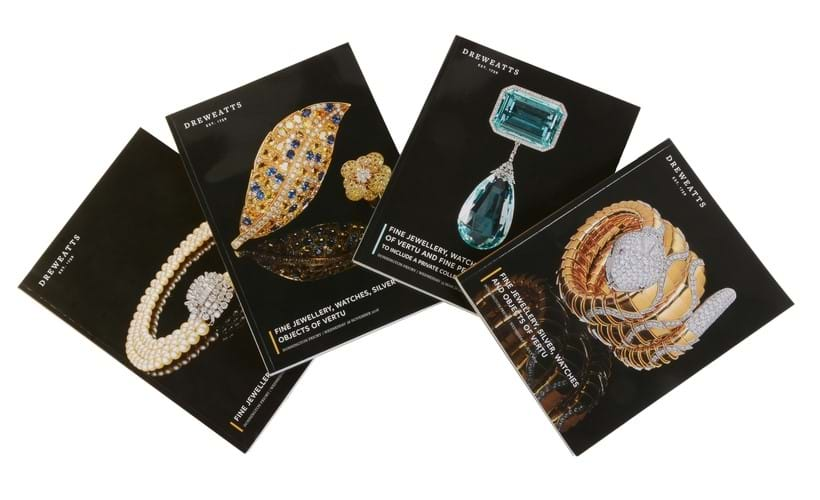
The job of the auctioneer is to put your pieces in front of thousands of potential buyers and to achieve the highest possible market price.
At Dreweatts, once the sale catalogue is published, it is uploaded to our own website and other specialist auction listing sites. This presents the auction to an international audience of potential buyers.
The lavishly illustrated physical printed catalogue is also mailed to Dreweatts own database of international buyers and collectors. Dreweatts also promotes its jewellery sales in a number of printed publications such as The Antiques Trade Gazette, The Daily Telegraph and Country Life in the UK.
The sales are also promoted in numerous publications in Europe, including Corriera Della Sera in Italy and Tendencias in Spain. Our press and PR department promote our sales in leading international publications, with newsworthy pieces being picked up and reported on in the press.
All Dreweatts sales are actively shared and posted on all social media platforms where we have a worldwide loyal following of people who regularly interact with us through these platforms.
Jewellery ‘on view' - the pre-auction viewing exhibition
In the week preceding the auction sale, all the lots in the sale are made available for the public to see. Potential buyers will come and inspect the jewellery in person when the lots go “on view” at Donnington Priory.
The lots from our flagship "Fine" jewellery sales are also on view at in our Pall Mall offices in London. Our jewellery specialists are always on hand for advice and expertise about all the lots in the sale.
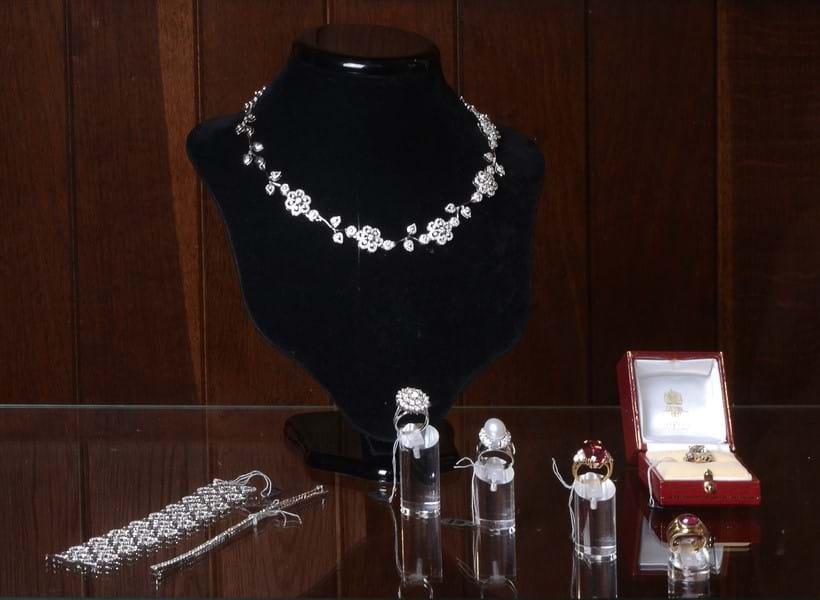
Sale day – the auction
The most important day of this whole process is of course sale day, which is when all auction rooms come alive with the air of expectation and excitement!
Buyers from all over the world now have numerous ways to interact with the auction, allowing them to bid in the sale in the most convenient manner. Many buyers still like to attend the auction in person and bid in the room.
Bidding by telephone is where a member of staff will have a buyer on the phone relaying the bidding increments to the bidder. Hotly contested lots can have 10 or more telephone bidders creating a veritable bidding war on some lots.
In the past 15 years live internet bidding has become probably the most popular way for buyers to bid in an auction, and in many sales we now see more than 50% of the lots selling to someone sitting behind a computer screen, or bidding on the move on a mobile app, from anywhere in the world.
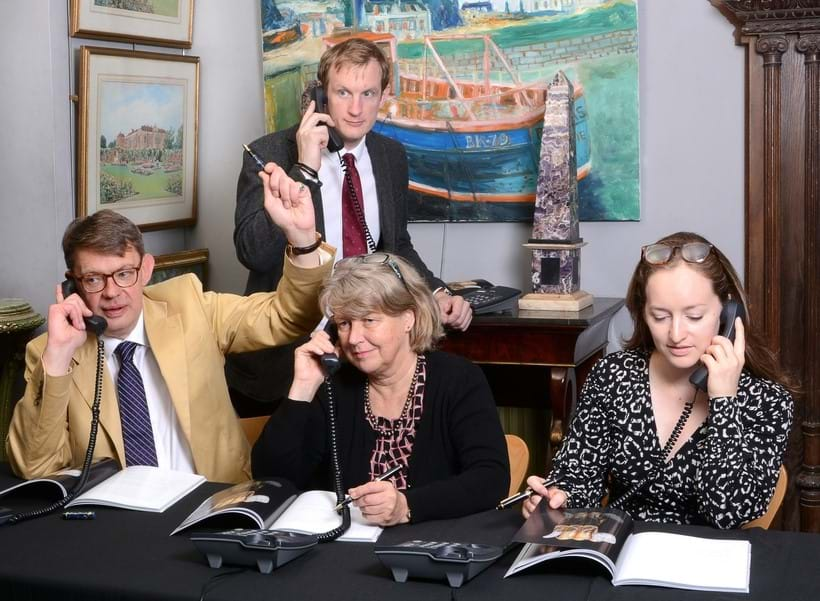
The hammer falls
On the fall of the hammer your jewellery will have been sold to the highest bidder, and the auctioneer will have passed title of your jewellery to a new owner. After the sale you will be notified of the selling price, and the proceeds of your sale will be sent to you within 28 days.
For further enquiries and a complimentary auction valuation, contact Dreweatts Jewellery Department:
Tel: + 44 (0) 1635 553 553
Email: jsw@dreweatts.com
Or complete our online valuation form here.















